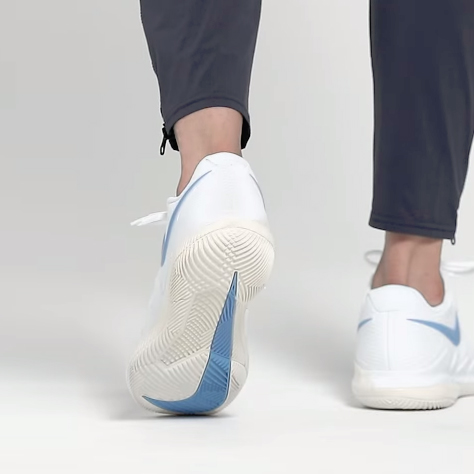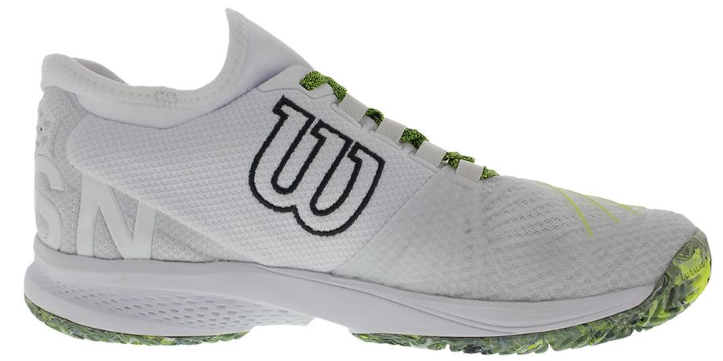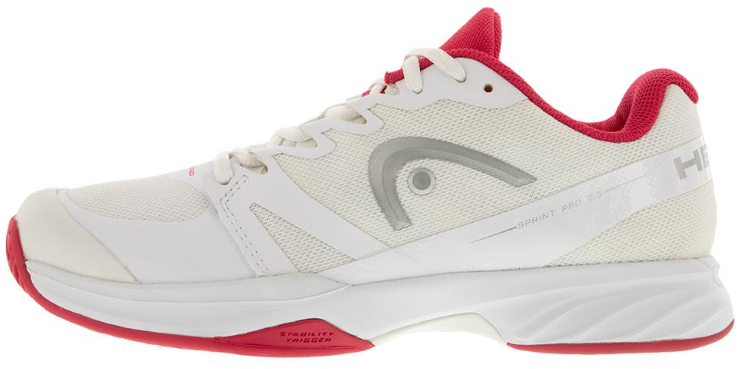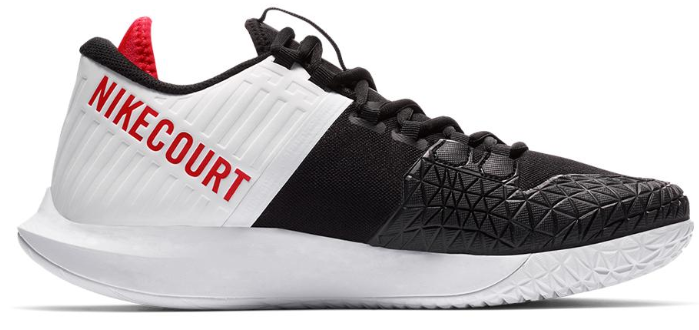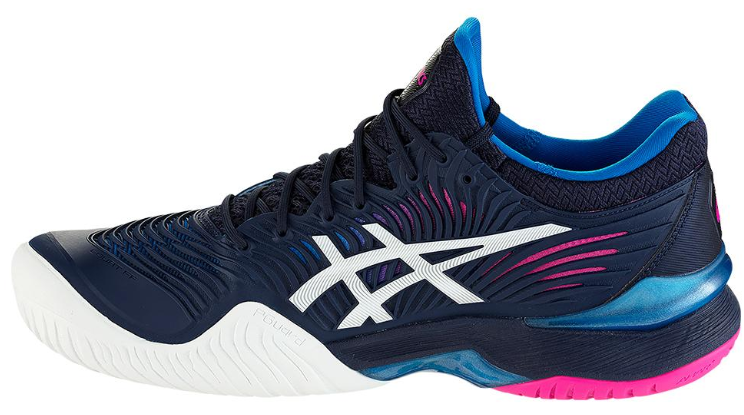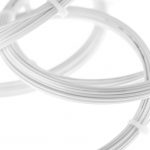– Watch –
As tennis continues to evolve, we’re witnessing some of the best athletes the sport has ever seen. This is partly because of the strides tennis shoe manufacturers have made regarding their equipment. Today, tennis shoes are highly specialized pieces of gear tailored to fit the individual’s playing style. The only problem is that it can be difficult to know which tennis shoes are best for your game. In this piece, we’ll analyze the four primary categories of tennis shoes: Lightweight, Durability, Value, and Hybrid. There are pros and cons within each group, but understanding their differences should allow you to make a more informed decision when purchasing your next pair of tennis shoes.
Lightweight Tennis Shoes
At left is the Wilson Men’s Kaos 2.0 SFT Tennis Shoe in White and Safety Yellow. At right is the Head Women’s Sprint Pro 2.5 Tennis Shoe in White and Pink.
Also known as Matchday tennis shoes, Lightweight tennis shoes are breathable, responsive, and yes, light. This is achieved by cutting out as much excess weight as possible, and incorporating lightweight tennis shoe technologies. It is this combination that results in a low-to-the-court and dynamic experience that encourages explosive movements in all directions. While these shoes are reinforced in key areas for necessary support, they are not the best day-to-day tennis shoes. Overall, if you need a shoe built for speed, the lightweight category is your best bet.
Durability Tennis Shoes
At left is the Babolat Men’s Propulse Fury All Court Tennis Shoe in Bright Red and Electric Blue. At right is the adidas Women’s Stella McCartney Barricade Boost Tennis Shoe in White and Callistos.
Serious tennis players of all levels log countless hours on the court in order to perfect their games. These endless drills and exercises require a shoe that can withstand a good beating. To meet these demands, tennis shoe manufacturers offer high-end Durability shoes. These shoes are bulkier than their lightweight counterparts, but offer vastly superior shock absorption, support, and cushioning as a result. They are much more resistant to wear and tear, and typically come with an outsole warranty. The overall purpose of these shoes is to assist with high-level practice and training. They tend to feature a number of technologies engineered to keep your feet and joints healthy, and have become lighter and more streamlined over the years. Athletes can expect Durability shoes to make use of more supportive uppers and midsoles, as well as thicker outsoles.
Value Tennis Shoes
At left is the New Balance Women’s 696v3 B Width Tennis Shoe in Pigment and Vivid Coral. At right is the Diadora Men’s S Challenge AG Tennis Shoe in White and Black.
Value shoes act as more cost-friendly alternatives to the industry’s leading models. They contain fewer and often older technologies, but are a viable option for recreational and club players who don’t go out and hit very often. In some cases, you’ll see that brands combine Lightweight and Durability shoe characteristics to create cost-effective, all-around tennis shoes. These models make excellent entry-level shoes. Another way to find a good value is to search for out-of-season colorways from leading tennis shoe manufacturers. These can sometimes be picked up at surprisingly low price points.
Hybrid Tennis Shoes
At left is the Nike Men’s Court Air Zoom Zero Tennis Shoe in Black and White. At right is the Asics Women’s Court FF 2 Tennis Shoe in Peacoat and White.
Hybrid tennis shoes represent the shoes that don’t naturally fit into one of the three categories previously discussed. A great example are the high-performance, all-around tennis shoes that fall somewhere between Lightweight and Durability shoes. This category is a bit newer, and can be attributed to the strides brands have made in recent years regarding material development and testing. There are also better-performing Value shoes that mimic high-end Lightweight and Durability models. They come with slight modifications to lower the price a bit, but still remain in the $100 range.
About the Author: Chris Worman

Weight: 190 lbs
For More on Tennis Shoes
To learn more about tennis shoes, we encourage you to check out some of our other informational blog posts:

